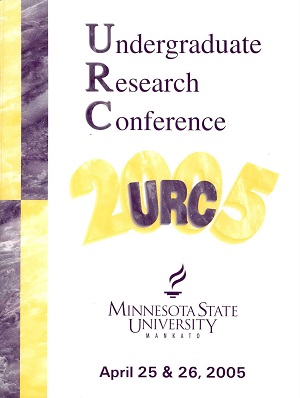Utilization of Polythiophenolfor the Efficient Removal of Triorganotin Residues from Organic Reaction Mixtures
Location
CSU 253
Start Date
26-4-2005 10:00 AM
End Date
26-4-2005 12:00 PM
Student's Major
Chemistry and Geology
Student's College
Science, Engineering and Technology
Mentor's Name
Brian Groh
Mentor's Department
Chemistry and Geology
Mentor's College
Science, Engineering and Technology
Description
Triorganotin compounds are useful synthetic reagents having numerous applications but limited appeal due to the difficulty of removing toxic triorganotin reaction by-products. An efficient removal method would greatly benefit both industry and research where these compounds are already emerging as vastly important reagents. In particular, triorganotins are used in the production of pharmaceuticals and agrichemicals. In model reaction studies, polythiophenol has been found to bind tri-n-butyltin chloride and bis-(tri-n-butyltin) oxide. Formation of a tin-sulfur bond between liquid triorganotin compounds and an insoluble polymer facilitated removal by simple filtration. Reaction progress and the removal of tin were monitored by gas chromatography and 'H NMR. The process resulted in quantitative removal of tri-n-butyltin chloride and bis-(tri-n-butyltin) oxide from the model reaction system.
Utilization of Polythiophenolfor the Efficient Removal of Triorganotin Residues from Organic Reaction Mixtures
CSU 253
Triorganotin compounds are useful synthetic reagents having numerous applications but limited appeal due to the difficulty of removing toxic triorganotin reaction by-products. An efficient removal method would greatly benefit both industry and research where these compounds are already emerging as vastly important reagents. In particular, triorganotins are used in the production of pharmaceuticals and agrichemicals. In model reaction studies, polythiophenol has been found to bind tri-n-butyltin chloride and bis-(tri-n-butyltin) oxide. Formation of a tin-sulfur bond between liquid triorganotin compounds and an insoluble polymer facilitated removal by simple filtration. Reaction progress and the removal of tin were monitored by gas chromatography and 'H NMR. The process resulted in quantitative removal of tri-n-butyltin chloride and bis-(tri-n-butyltin) oxide from the model reaction system.



